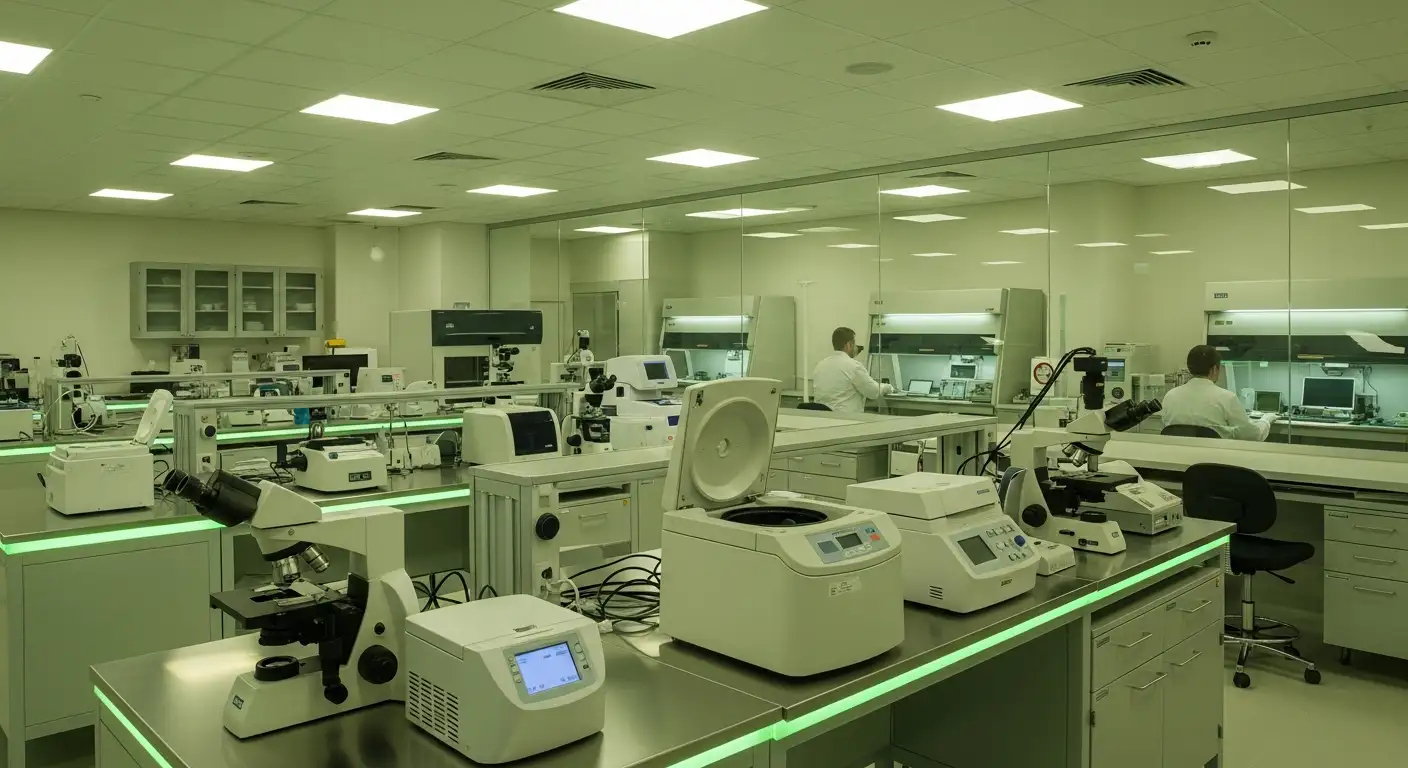Common Fertility Treatments and Their Success Rates
Navigating Fertility Options: What You Need to Know

Understanding the Landscape of Fertility Treatments
Deciding to pursue fertility treatments can be overwhelming, with many options available, each with different success rates and factors influencing outcomes. This article provides a comprehensive overview of common fertility treatments, their effectiveness, and how individual factors affect success, empowering couples and individuals with the knowledge needed to make informed decisions.
Overview of Common Fertility Treatments and Their Mechanisms

What are common fertility treatments and how do they work?
Fertility treatments encompass a variety of medical and surgical approaches aimed at helping individuals and couples conceive. These include medications, surgical procedures, and assisted reproductive technologies (ART). Each method targets specific causes of infertility or enhances reproductive potential.
Medications for Ovulation Induction are frequently used in cases where women do not ovulate regularly. Clomiphene citrate, commonly known as Clomid, is a widely used oral medication that stimulates the ovaries to produce eggs. About 30%-40% of women taking Clomid achieve pregnancy within three cycles. Injectable hormones such as Gonal F or Follistim are another category of medications; they are often used in conjunction with intrauterine insemination (IUI) to improve ovulation chances. Fertility hormone injections can help women with conditions like anovulation or polycystic ovary syndrome (PCOS), with approximately half of the women using these drugs becoming pregnant.
Surgical Procedures are performed to correct anatomical barriers that impede conception. Examples include surgery to remove scar tissue or fibroids, repair blocked fallopian tubes, or treat endometriosis. For instance, repairing fallopian tubes can significantly improve fertility outcomes. Additionally, in men, surgical intervention to repair a varicocele—an enlarged vein in the scrotum—can enhance sperm quality in about 60% of cases.
Assisted Reproductive Technologies (ART) are advanced methods that involve directly handling eggs and sperm outside the body. The most commonly known ART is In Vitro Fertilization (IVF). IVF entails stimulating the ovaries with medications to produce multiple eggs, retrieving those eggs through a minor surgical procedure, fertilizing them in a lab (often with techniques like intracytoplasmic sperm injection, ICSI), and then transferring the resulting embryos into the uterus.
Another ART procedure is Intrauterine Insemination (IUI), where sperm is directly placed into the uterus. It is less invasive but has lower pregnancy success rates—ranging from 5–15% per cycle for women under 35.
How do these treatments work together? Often, medications are used to optimize the chances of ovarian stimulation prior to procedures like IUI or IVF. Surgical correction of anatomical issues can improve natural conception chances or boost the effectiveness of subsequent ART procedures.
Success Factors and Usage: The choice of treatment depends on the underlying cause of infertility, age, health, and personal preferences. ART methods like IVF are particularly effective for tubal disease, male infertility, or unexplained infertility. They are also valuable for women with age-related decline in egg quality, as using donor eggs can elevate success rates.
In summary, fertility treatments are tailored to individual needs, employing medications to induce ovulation, surgical techniques to correct anatomical problems, and ART methods to assist fertilization and implantation. Advances in technology and understanding of reproductive health continue to improve success rates and make conception possible for many facing infertility challenges.
Success Rates Across Different Treatments and Age Groups

What are the success rates of fertility treatments like IVF and IUI?
Fertility treatments offer varied success rates depending on several factors, especially age. In vitro fertilization (IVF) stands out as the most effective among common fertility treatments. For women under 35, the success rate per cycle can reach nearly 55–60%, translating to about a 55.6% live birth rate. This rate declines as age increases, with women aged 35–37 experiencing success rates around 41%, and those aged 38–40 seeing success drop to approximately 27%. For women over 40, success rates diminish further, averaging about 7% per cycle.
In contrast, intrauterine insemination (IUI) typically has lower success rates, ranging from 10–20% per cycle for women under 35, with a decrease to about 2–5% for women over 40. These figures can vary based on factors such as sperm quality and underlying fertility issues.
It’s important to note that success rates are not solely determined by age. The use of donor eggs can significantly enhance outcomes for older women. When using donor eggs, success rates can reach 70–80%, regardless of recipient age, because the egg quality replaces the age-related decline.
Overall, the likelihood of achieving pregnancy through fertility treatments varies for each individual. Consulting with a healthcare provider can help tailor treatment plans and set realistic expectations based on personal health conditions.
How does using own eggs versus donor eggs affect success rates?
Choosing between using a woman’s own eggs or donor eggs greatly influences success outcomes. For women under 35, using their own eggs typically results in high success rates, close to 55–60% per cycle. As women age, especially beyond 40, success rates with their own eggs decline sharply due to decreased egg quality and increased chromosomal abnormalities.
However, employing donor eggs can mitigate these age-related challenges. Donor eggs, often sourced from younger women, have higher developmental potential. For women over 40, success rates with donor eggs can jump to 70–80%, comparable to or even exceeding those of younger women using their own eggs.
This difference underscores the importance of egg quality in fertility. When personal egg quality diminishes with age, donor eggs offer a significantly higher chance of achieving pregnancy.
How does success vary with age, especially above 35?
Age is the most influential factor in fertility treatment success. Women under 35 have the highest chances, with live birth rates from IVF around 55.6%. As age increases, success rates decline consistently. For example:
| Age Range | IVF Success Rate per Cycle | Notes |
|---|---|---|
| Under 35 | ~56% | Highest success, younger eggs and better embryo quality |
| 35-37 | ~41% | Slight decline begins due to aging |
| 38-40 | ~27% | Continued decrease with age |
| Over 40 | ~7% | Significantly lower success, egg quality issues |
Beyond 35, the quality and quantity of a woman’s eggs decrease, leading to lower fertilization rates and higher chances of chromosomal abnormalities. The decline accelerates after 40, but using donor eggs can help counter these effects.
Advancements in reproductive technology and the use of frozen embryos have improved outcomes over time. However, age remains a critical determinant, emphasizing the importance of early fertility assessments and planning.
Additional considerations
Success rates are averages derived from large datasets, such as those maintained by the CDC and SART. They serve as helpful guidelines but cannot predict individual outcomes precisely. Factors such as lifestyle, health conditions, embryo quality, and clinic expertise also play crucial roles.
Using tools like the SART online calculator can provide personalized estimates of success based on specific patient and treatment variables. Yet, direct comparisons between clinics should be made cautiously, as case complexities vary.
Ultimately, understanding these nuances empowers prospective parents to make informed decisions and set realistic expectations about their fertility journey.
| Treatment Type | Success Rate Range | Influencing Factors | Additional Notes |
|---|---|---|---|
| IVF (women <35) | ~55–60% | Age, embryo quality, clinic practices | Highest among fertility treatments |
| IVF (women 35–37) | ~41% | Age-related decline | Use of donor eggs can improve success |
| IVF (women 38–40) | ~27% | Egg quality decline | Donor eggs highly effective in older women |
| IVF (women >40) | ~7% | Chromosomal issues | Success significantly affected by age |
| IUI | 10–20% | Sperm health, age | Lower success, varies with sperm quality |
| Donor eggs | 70–80% | Egg source, age of recipient | Best option for older women |
This comprehensive overview highlights how age, treatment type, and egg source influence fertility success rates, guiding individuals toward informed choices in their reproductive plans.
Factors Influencing Fertility Treatment Success
What factors influence the success of fertility treatments?
Fertility treatments such as IVF and IUI do not have guaranteed outcomes, and success hinges on several intertwined factors. Foremost among them is the woman's age. Women under 35 generally experience higher success rates, with up to nearly 55% live birth rates using IVF. As women age, success rates tend to decline sharply; by age 40, chances drop significantly, often below 10-15%. This decline is largely due to decreased egg quality and increased chromosomal abnormalities.
Another critical aspect is ovarian reserve, which reflects the remaining quantity and quality of a woman's eggs. Indicators such as Anti-Müllerian Hormone (AMH) levels and Antral Follicle Count (AFC) are commonly used to assess this reserve. Higher AMH levels often correlate with better responses to stimulation and higher chances of successful conception.
The quality of the embryo transferred is essential. Embryo appearance, also called embryo grading, along with other factors like the timing of transfer, influence pregnancy outcomes. High-quality embryos, typically those with good morphology and development parameters, are associated with higher implantation and live birth rates.
Procedural elements also matter. For instance, the embryo transfer method—preferably minimally traumatic—can impact success chances. The number of embryos transferred is balanced carefully to optimize pregnancy rates while minimizing the risk of multiple births. Many clinics are now favoring single embryo transfers, especially with high-quality embryos, to promote healthier pregnancies.
The underlying reason for infertility (such as unexplained causes, PCOS, or male factor infertility) influences the likelihood of success. For example, infertility caused by male factors may be mitigated more effectively with ICSI, enhancing fertilization chances.
Lifestyle choices significantly affect outcomes. Factors like obesity, smoking, excessive alcohol, and high stress levels can impair fertility and success rates. Maintaining a healthy BMI, quitting smoking, and managing stress can support better results.
In addition to these biological factors, procedural technique and operator skill during embryo transfer, embryo handling, and the use of advanced technologies like egg freezing or donor eggs further influence success.
Overall, the combination of patient-specific biology, treatment protocols, embryo quality, and procedural expertise shapes the outlook for fertility treatments, making personalized care essential for optimizing chances of a successful pregnancy.
Interpreting Success Rate Data for Personal Fertility Planning

How can I interpret success rate data to understand my chances of pregnancy?
Understanding what success rate data means is crucial when planning your fertility journey. These statistics, often provided by the CDC and organizations like SART, reflect the average chances of achieving pregnancy through procedures such as IVF. Importantly, success rates are influenced by various factors, primarily age.
For example, women under 35 typically experience live birth rates of around 55% per cycle, highlighting higher fertility potential at this age. As women age, these chances decline significantly; women over 40 often see success rates drop below 15%. This decline correlates with decreasing egg quality and increased chromosomal abnormalities, which reduce the likelihood of a successful pregnancy.
Success rates are presented in different ways—per cycle, per embryo transfer, and cumulatively over multiple cycles. Cycles include embryo transfers within a year after egg retrieval for patients using their own eggs. For donor eggs, success data are often noncumulative, based on cycles initiated in the current year.
These numbers serve as benchmarks but do not guarantee results. They are derived from large-scale data averages, meaning individual outcomes can vary based on health, cause of infertility, and treatment specifics. For example, embryo quality and uterine environment significantly impact success chances.
The importance of personalized assessment and consultation
Because success depends on many personal factors, consulting a fertility specialist is vital. A specialist can evaluate your unique situation—such as ovarian reserve, sperm quality, and past fertility history—and interpret success statistics tailored to you.
Markers like Anti-Müllerian Hormone (AMH) levels help assess ovarian reserve, informing your likely response to stimulation. The specialist can help determine if your chances might be higher with specific interventions, like donor eggs or surgery.
Personalized assessments allow for more realistic expectations and tailored treatment plans, which can improve outcomes and emotional well-being.
Use of online calculators like SART for estimating success
Tools like the Society for Assisted Reproductive Technology (SART) online calculator are valuable for estimating your chances of achieving a live birth. These calculators use data from thousands of cases to provide personalized estimates based on your age, BMI, and treatment history.
The SART calculator offers a cumulative success probability over up to three IVF cycles, giving a more comprehensive outlook. It accounts for variables such as previous IVF attempts, reasons for infertility, and use of your own versus donor eggs.
However, it’s important to remember that these tools provide estimates based on population data. They offer a helpful starting point but should be used alongside guidance from your healthcare provider.
How to interpret these success rates and data
Interpreting success data involves viewing the statistics as general benchmarks rather than precise predictions. While they help set realistic expectations, individual outcomes depend on health factors, treatment quality, and sometimes, a bit of luck.
Overall, successful fertility planning requires combining these data-driven insights with personalized medical advice. Effective collaboration with your healthcare team can guide you through choosing the best options suited to your circumstances and goals.
Advancements and Innovations Improving Success Rates

How have technological improvements in IVF evolved over time?
Over the years, in vitro fertilization (IVF) technology has seen significant enhancements that have contributed to higher success rates. Early techniques relied heavily on basic laboratory procedures, but today's IVF labs utilize advanced incubators, time-lapse embryo monitoring, and genetic screening methods.
The development of better culture media has improved embryo development and selection. Innovations like preimplantation genetic testing (PGT) help identify chromosomally normal embryos, increasing the likelihood of a successful pregnancy. Additionally, improvements in microscope technology allow embryologists to better assess embryo quality.
Automated systems and improved cryopreservation techniques, especially vitrification, have increased the survival of frozen embryos, making frozen embryo transfers (FET) equally successful as fresh transfers.
Frozen embryo transfers and their success parity with fresh transfers
Frozen embryo transfers have become increasingly popular, thanks to advancements in cryopreservation methods. Vitrification, a flash-freezing technique, minimizes ice crystal formation and has dramatically improved the viability of frozen embryos.
Studies show that success rates for FET are comparable to those of fresh transfers when high-quality embryos are used. In some cases, FET cycles even have slightly better outcomes due to the endometrial environment being more natural and less affected by ovarian stimulation medications.
This parity has made FET a preferred choice, reducing the risks associated with multiple embryo transfers and allowing for more flexible treatment planning.
Single embryo transfer (SET) and reducing multiple pregnancies
To minimize the risks associated with multiple pregnancies, many clinics now recommend single embryo transfer (SET), especially for younger women and those with good-quality embryos. SET involves transferring only one high-quality embryo per cycle.
Research indicates that when high-grade embryos are used, SET does not significantly reduce the overall success rates but greatly lowers the chance of twins or higher-order multiples. This approach results in healthier pregnancies and fewer complications for both mother and baby.
As a result, clinics adopting SET protocols have seen a decline in multiple pregnancy rates, which historically have been linked to preterm birth and other health risks.
| Innovation Area | Impact | Additional Notes |
|---|---|---|
| Advanced laboratory equipment | Improved embryo viability and selection | Enables better monitoring and genetic testing |
| Cryopreservation techniques | High survival rates of frozen embryos | Vitrification reduces ice crystal damage |
| Embryo grading and genetic screening | Better embryo selection, higher success rates | PGT helps identify chromosomally normal embryos |
| Personalized medication protocols | Customized stimulation to improve success | Tailored to individual hormonal profiles |
| Set protocols | Reduced multiple pregnancies, improved safety | Emphasizes quality over quantity |
What are the most effective fertility medications?
The most effective fertility medications include Clomiphene Citrate (Clomid), a widely used oral drug for ovulation induction, achieving pregnancy in about 30%-40% of women within three cycles. Aromatase inhibitors, like Letrozole (Femara), are effective alternatives, especially in women with PCOS, with fewer side effects and comparable success rates.
Injectable hormones such as FSH, LH, and combined human menopausal gonadotropins (hMG) stimulate the ovaries to develop multiple follicles. These are used when oral medications are insufficient but require close monitoring due to the risk of ovarian hyperstimulation syndrome.
Human chorionic gonadotropin (hCG) is administered to trigger ovulation once follicles mature. Gonadotropin-releasing hormone (GnRH) agonists and antagonists are crucial for controlling the timing of ovulation during IVF cycles.
For hormonal imbalances, medications like metformin help women with insulin resistance linked to PCOS, while dopamine agonists such as bromocriptine are prescribed to lower high prolactin levels that interfere with ovulation.
Selection of these medications depends on the patient's specific condition, medical history, and fertility diagnosis, often used in combination to optimize chances of success.
This continuous advancement in medication protocols, combined with technological improvements, has played a vital role in increasing the overall success rates of assisted reproductive procedures.
| Medication Type | Purpose | Success Factors |
|---|---|---|
| Clomiphene (Clomid) | Ovulation induction | High success in young women, low multiple pregnancy risk |
| Aromatase inhibitors (Letrozole) | Ovulation with fewer side effects | Effective in PCOS patients |
| Gonadotropins (FSH, LH, hMG) | Stimulate multiple follicle development | Success depends on dose and monitoring |
| hCG | Trigger ovulation | Used in final maturation stage |
| GnRH agonists & antagonists | Control ovulation timing | Improve cycle control and success rates |
| Metformin | Address insulin resistance | Special benefit for PCOS patients |
| Bromocriptine | Treat high prolactin levels | Improves ovulation in hyperprolactinemia cases |
This combination of medical innovation and technological advancement continues to boost success rates across fertility treatments, giving hope to many couples trying to conceive.
Making Informed Choices in Fertility Care
Understanding the complexities and success rates of various fertility treatments is essential for making informed decisions. While advancements in technology and clinical practices continue to improve outcomes, individual factors such as age, health, and embryo quality remain critical. Consulting experienced fertility specialists and utilizing tools like success rate calculators can help set realistic expectations and develop personalized treatment plans. With ongoing progress and a better understanding of success determinants, many couples and individuals can look forward to achieving their reproductive goals.
References
- ART Success Rates - CDC
- SART: Success Rates - Society for Assisted Reproductive Technology
- IVF Success Rates & Statistics | PFCLA IVF Clinic Blog
- Which Infertility Treatment Is for You? - WebMD
- Fertility Treatments, Timing and Success Rates
- Success Rates of Fertility Treatments - Healthgrades Health Library
- IVF Success Estimator | ART - CDC



































































































